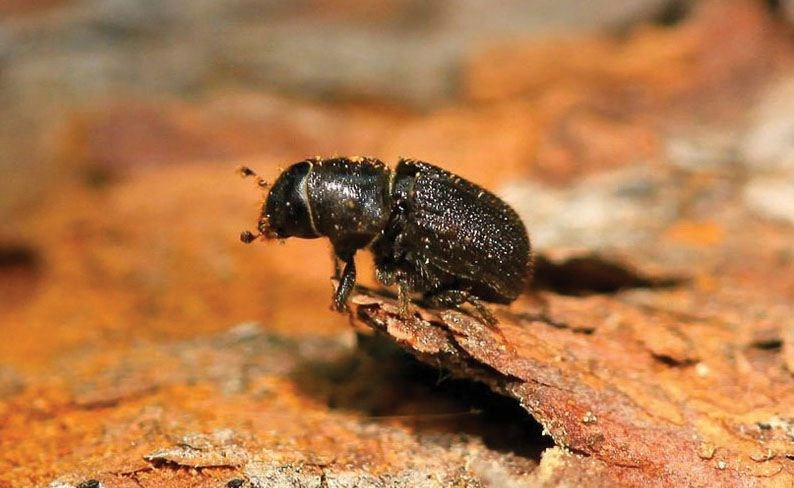There's still one thing bugging the forest industry.
It's just a small thing, but there are trillions of them.
The mountain pine beetle has run its course through B.C.'s lodgepole pine smorgasbord and it is now chowing down on Alberta's jackpine feast. It is heading east and there's a good chance nothing can stop it from causing extensive damage to the entire Canadian boreal forest.
Documentary filmmaker David York has a simple question, and he posed it in his television special The Beetles Are Coming. Are you paying attention, Ontario? Quebec? New Brunswick? America? You are all about to be hit with billions of tax dollars in forest destruction consequences, with thousands of lost jobs, communities in need of economic diversification, urban-rural residency displacement, governments trying to save a major inflow of industrial money while paying out huge sums in retraining.
All from a little beetle less than the size of a grain of rice.
York was apologetic to British Columbians the day before the special airs on CBC television. He knows fully that this province, especially the northern and eastern communities, have been bathed in pine beetle blue for close to 20 years. The only other colour more dominant than the denim stain was the red ink it spilled all over the provincial economy.
"One of the reasons I got into this was during my work on the film I made called Wiebo's War [a biography of Wiebo Ludwig who stood up against the petroleum industry in northern B.C. and Alberta]," said York. "I spent half of my career filming in B.C. and Alberta, not at home [Ontario]. I was around when the pine beetle blew over the Rockies. I remember seeing red attack looking like fall colours but it was the pine trees. It was everywhere in Western Canada but completely unknown in Eastern Canada. It feels important to me in this film to tell the rest of Canada what happened. The people in B.C. and Alberta know all too well what happened. It is tragic, and an indictment of how this country is organized, that 15 years too late I'm telling this story to a shocked Central Canada."
He explains the science that indicates human hands at the many switches that allowed the beetle to become an epidemic. Yes, he said, halting the proliferation of wildfires played a big role in that, but he does not blame governments for fire protection of communities.
Climate change is definitely a big role player, he said. Now communities and governments and individual forest companies are confronted with having to calculate what temperatures and water distribution will be in the future, in order to make policy decisions like what species of trees to replant with. Monoculture forests are to be avoided, for practical ecosystem reasons.
"Peter Baird, a Canfor guy [based in Prince George] is really smart about that, but it didn't make it to the film," York said.
What did make the film was a lot of never-before-seen footage of the little critters. York set up a beetle-watch network from northern B.C. down into Montana, in order to get them on film burrowing into trees. He succeeded in filming outbreaks in action in the areas of Smithers and Osoyoos.
They succeeded in seeing many things with their cameras that most foresters in Central B.C. have never seen, such as the beetle in actual flight and the beetles laying their secretions as they chew tunnels through the wood. York called in many resources - from university research labs to remote-controlled mini-helicopters - to make the film tell a story even those surrounded by its effects might find interesting.
The Beetles Are Coming can be seen for the first time tonight on CBC's The Nature of Things. It will be broadcast again on CBC Newsworld on Saturday.Check out the second video.https://www.dropbox.com/sh/71e7t4b8snhkx7j/DdpVPUWqie?n=55084800#/



.png;w=120;h=80;mode=crop)